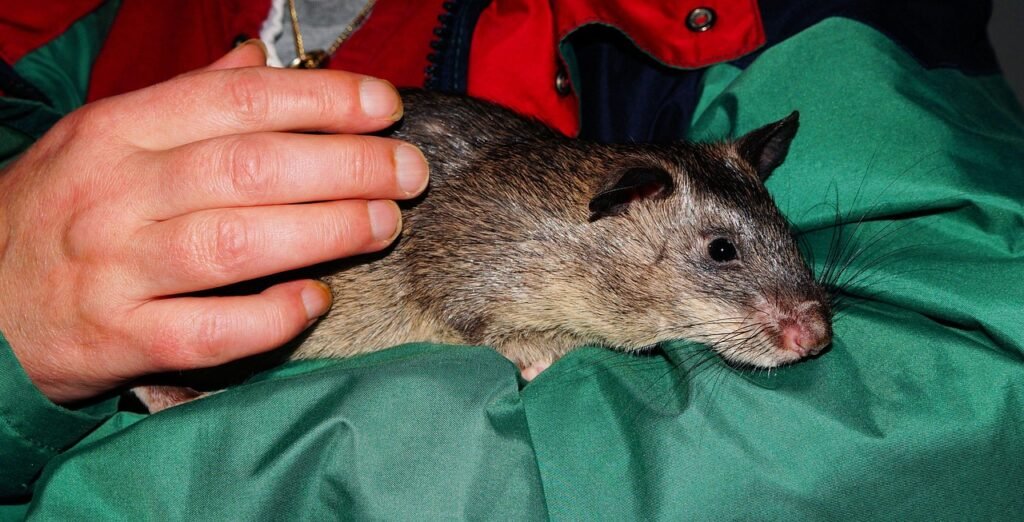Alarm spread across North Yorkshire this week after pest control workers discovered a giant rat, measuring over 22 inches from nose to tail, inside a home in Normanby. The rodent, described by local councillors as “almost the size of a small cat,” immediately sparked widespread concern and intense public discussion about the UK’s escalating rodent problem.
A Discovery That Captured the Nation
Eston Ward councillors David Taylor and Stephen Martin shared the unsettling image of the giant rat on social media on 28 July, noting that such discoveries are becoming increasingly common. “It’s not a one-off,” they wrote, adding that local residents have witnessed a surge in sightings. The find, quickly picked up by national newspapers and broadcasters, has led to calls for immediate and coordinated action to prevent the situation from worsening.
Responding to the post, many Britons expressed concern about pest control practices in the area. Residents of Redcar and Cleveland, where Normanby is located, have reported multiple rat holes in gardens and streets. Some people in the region argue that the scale of infestation has grown following reductions to council-funded pest management programmes.
The Wider Rat Problem in the UK
While the Normanby rat was extraordinary for its size, experts point out that the brown rat is one of the country’s most adaptable mammals, thriving in both urban and rural environments. Rats can breed remarkably quickly: a female starts reproducing at three months and can produce up to five litters a year, each containing up to a dozen young. This prolific reproductive rate allows local populations to surge in favourable conditions, particularly if food waste is easily accessible.
Recent years have seen an increase in rat populations not only in North Yorkshire but in cities such as Birmingham and Glasgow as well. Both have faced periods of waste collection strikes and lapses in coordinated pest management, prompting public health warnings and, in some cases, the introduction of new levies on pest control call-outs.
Public Health and Safety Concerns
Rats are more than a nuisance; their presence also brings real health risks. Public health officials warn that rats can carry numerous diseases, including Leptospirosis, which humans may contract from contaminated water, and Hantavirus, a potentially serious respiratory infection. Food and surfaces contaminated by rats or their droppings also increase the risk of illnesses such as Salmonellosis.
Hygiene specialists urge the public to remain vigilant. The Wildlife Trust recommends securing rubbish bins, removing food sources from gardens, and checking for telltale signs of burrows or gnawing on property. Effective deterrence and rapid response remain the best means to prevent rats from establishing themselves in residential areas.
The Political and Social Response
The appearance of such a large rat, and the subsequent media attention, have reignited debates around council responsibilities and funding. Some councillors have argued that cuts to local pest control services leave householders exposed, shunting costs onto residents and creating gaps in community-wide prevention. There are now calls for robust, joined-up approaches, with demands for partnerships between local authorities, housing agencies, water companies, and public health bodies.
A Redcar and Cleveland council spokesperson has said that while a dedicated pest control officer still manages infestations on council-owned land, wider community support is more limited. Advice to residents focuses on prevention and early reporting, but some local leaders warn this is not enough in areas facing chronic infestations.
How the UK is Addressing the Rodent Challenge
This isn’t the first time a giant rat has been discovered in a British home. The previous record, set in Bournemouth in 2018, involved a 21-inch rat, but the Normanby find now seems to have exceeded that size. Pest control experts advocate for a return to subsidised rat management services and greater public engagement in prevention strategies.
Rising urban development, shrinking green spaces, and bin collection issues have all contributed to the perfect environment for thriving rat populations. Councils across the UK are reassessing strategies, and some are reviving inter-agency working groups to share data and coordinate rapid responses, especially where infestations threaten public health or vulnerable residents.
Conclusion
This latest giant rat discovery is more than a bizarre one-off—it is a dramatic sign of a much broader urban and rural issue. Left unchecked, rodent populations can expand quickly and make local life difficult for families and businesses alike.
Councils, experts, and residents now face a pressing question: How will the UK balance declining public sector resources against the need for improved hygiene, pest control, and urban management? One thing is clear: the giant rat of Normanby will not be the last seen if robust action isn’t taken soon.
To read more click here

